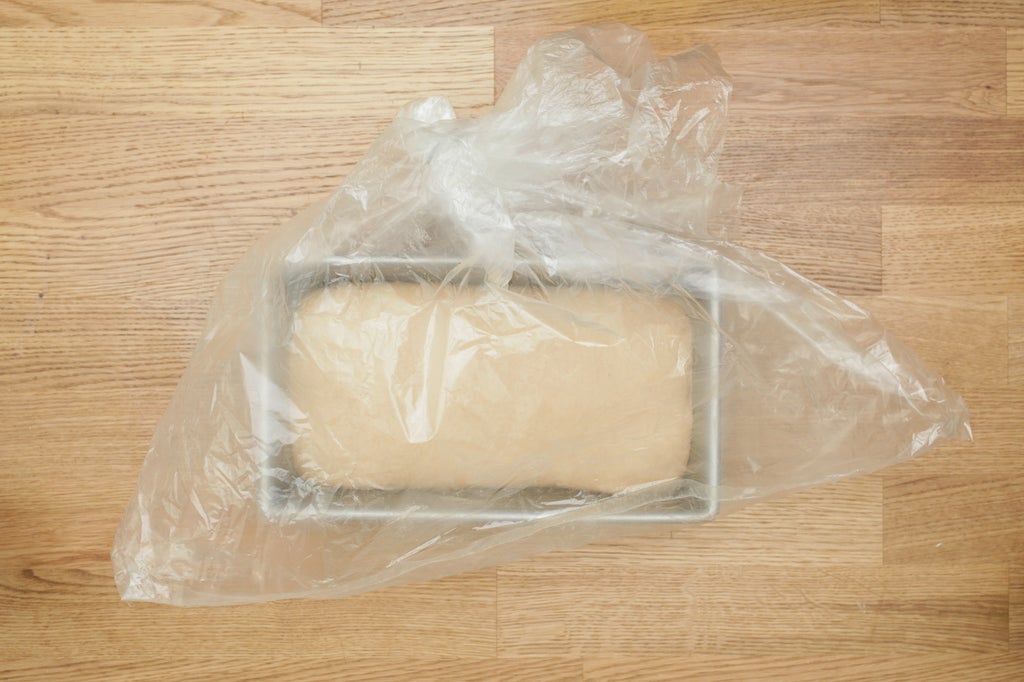Introduction: Your First Rise
Welcome to your first bulk ferment. We refer to this step as a bulk ferment because we are letting our whole dough ferment as one bulk mass, before dividing it up into a final shape or forming it for a secondary proofing. (More on shaped secondary proofing later)
As the yeast activates and begins to feed, fermentation begins to occur within our bread, and the starches start breaking down. Carbon dioxide gas begins bubbling up within the dough, and the gluten network within the loaf begins to expand. This is how the gas-filled cellular structure of our bread is created!
In a 72-78 degree kitchen, this first rise should take about 1-2 hours. You want your dough to double in volume, any growth beyond double and you move into the danger zone of an over-proofed dough.
Note: You will know if you have over proved your dough because the dough will become quite globular when trying to shape it. The gluten has broken down completely because the yeasts have eaten all the available food in the dough.
The above video shows the complete doubling of this loaf. Choose a clear bowl or container for your bulk fermentation that allows you to see all sides of the dough while it grows. The bowl should be at least twice as large as the dough ball just after kneading.
While you are waiting for your dough to rise, keep in mind that temperature effects every part of breadmaking. That is why we try to control the temperature of our ingredients, particularly water. The warmer your dough's temperature is, and remember to factor in the ambient temperature of the room you are proofing the dough in, the faster your dough will rise.
We can use this concept to our advantage if we need to, by placing doughs in warm ovens if we want a fast prove, but we sacrifice flavor development by skirting a longer rise time. Some bakers choose to stretch out their proving times by placing loaves in cold temperatures of refrigerators, or even overnight outdoors, giving the active leaven cultures the time to work slowly and develop a tangier yeasty flavor. We'll go over this more in our sourdough lesson.
For this first loaf, take the time to proof it out of the fridge. In other lessons, we will use the refrigerator to slow our ferments and proofs to help develop flavor and encourage more rigid forming, but for this lesson, observe the science happening on your countertop.
Step 1: The Importance of Temperature and Time
While you are allowing your dough to bench rest and proof on the countertop, here is some more reading on the temperatures of your ferments. (Yes, it's really that important!) Temperature sets the speed at which dough ferments. Optimal fermentation occurs at around 75 degrees Fahrenheit, both inside and outside of the dough.
Note: Have you been paying attention to the use of the terms Ferment, Proof, and Bench? They are all terms that are often used interchangeably by bakers but they all mean the same thing - giving your dough time to form a cohesive gluten network, ferment, and expand.
If you really want to know about what is happening inside your loaf, probe the dough with a stick thermometer. If your dough is cooler than 72 degrees, or warmer than 78 degrees, fermentation will happen too slowly or too quickly.

I live in Los Angeles, a place not particularly known for its cool damp days. There are a few precautions I am constantly taking to make sure my bread does well in my climate. During bulk proves, I stop doughs from drying out by placing bowls into large turkey oven bags. This creates a little terrarium of humidity to stop the loaf from drying out as it ferments. Furthermore, there are days when I don't proof my doughs in my kitchen, but instead in front of the AC unit in my bedroom. I drag a stool in there, put a heavy book on top of the stool, and set the dough container on top of the book.

We can combat ambient temperatures by trying to calibrate water temperatures. If it is super chilly out, and nowhere in your house is above 65 degrees, you can boost the temperature of the water to encourage a more rapid yeast development in your dough. The reverse can be applied for overly warm days.
In short, warm temperatures mean you will have fast rises, and cold temperatures will yield much slower rises. You can control the speed of fermentation with temperature.






